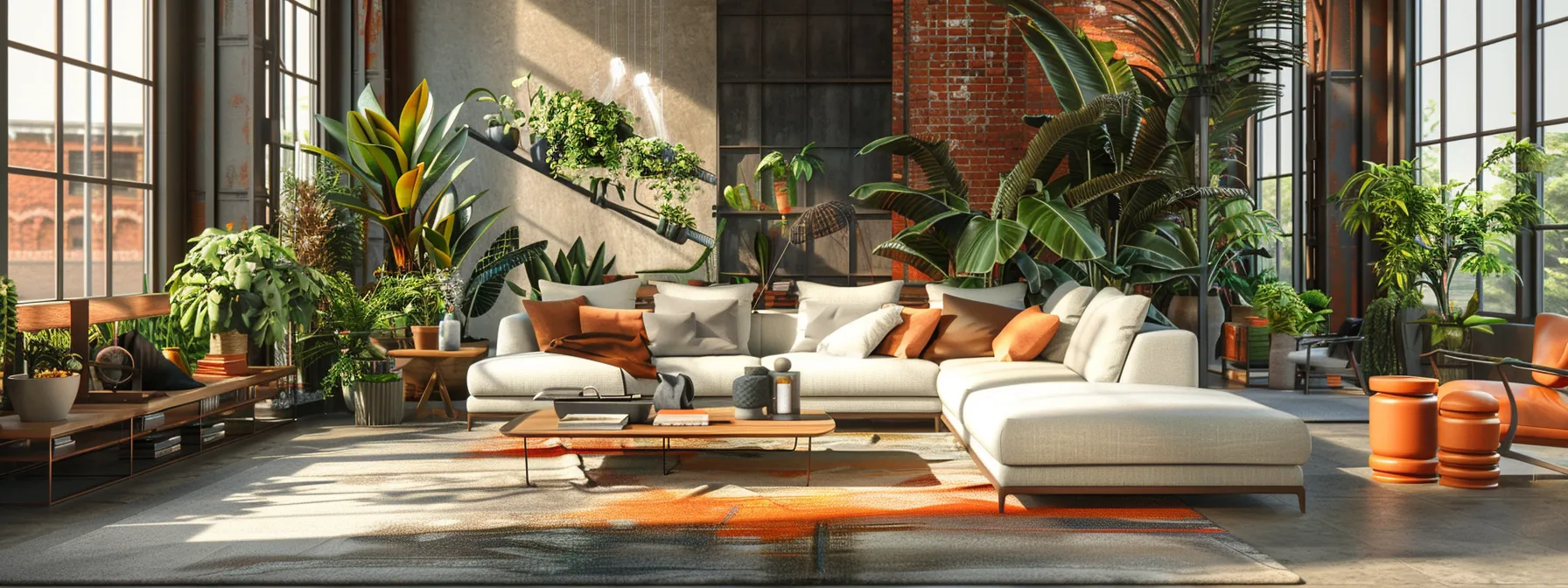Are you looking to create a home that combines style with sustainability? With eco-friendly interior design trends gaining popularity, now is the perfect time to explore options that benefit both the environment and your living space. This article will discuss the use of natural materials like bamboo and wood flooring, the importance of energy-efficient lighting, and the role of indoor plants in improving ventilation and air quality. By reading on, you will discover practical solutions for making your home more sustainable, helping you address environmental concerns while enhancing your living concept.
Using Natural Materials to Enhance Sustainability
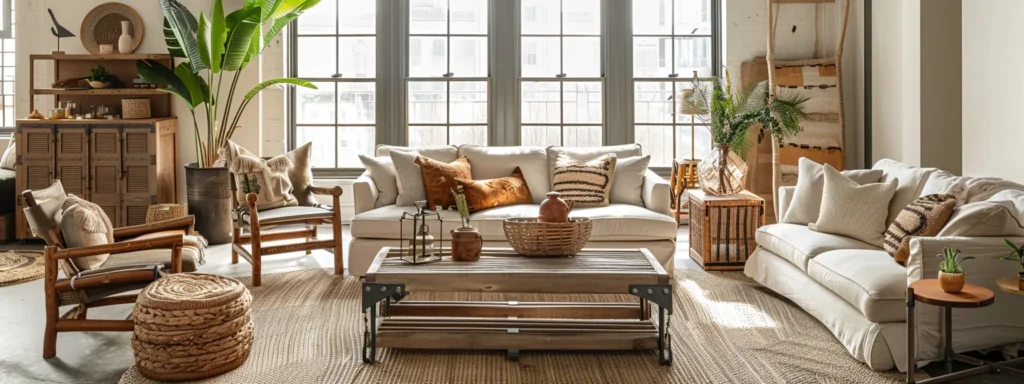
Utilizing natural materials in interior design significantly enhances sustainability. Advantages include the use of responsibly sourced sustainable wood and bamboo, which support water conservation and resource management. Integrating recycled metal and glass elements and selecting eco-friendly flooring options like cork can improve indoor air quality. Additionally, sourcing locally-made materials reduces the carbon footprint while maximizing daylight in living spaces.
Benefits of Utilizing Sustainable Wood and Bamboo
Utilizing sustainable wood and bamboo offers significant advantages in promoting sustainability within eco-friendly interior design. These materials align with the principles of the circular economy by minimizing waste and enabling reuse, which is increasingly advocated by organizations like the American Society of Interior Designers. By choosing sustainable wood and bamboo, designers not only reduce their environmental impact but also support responsible sourcing practices that contribute to long-term resource management.
Integrating Recycled Metal and Glass Elements
Integrating recycled metal and glass elements in interior design enhances both the efficiency of materials used and the overall sustainability of the built environment. These materials not only reduce waste but also contribute to a healthier habitat by minimizing toxic chemicals commonly found in new products. By incorporating these reclaimed resources alongside natural wood and other eco-friendly materials, designers can create an ecosystem of balance that promotes conscientious living and supports the health of the planet.
Choosing Eco-Friendly Flooring Options
Choosing eco-friendly flooring options is essential for promoting sustainable modern living. Materials like bamboo, cork, and reclaimed wood not only provide durability but also help in reducing carbon emissions by minimizing pollution and recycling existing materials. By selecting these types of flooring, homeowners can significantly lower their greenhouse gas footprint while contributing to healthier indoor environments, making informed choices that align with their commitment to sustainability.
Sourcing Locally-Made Materials for Reduced Carbon Footprint
Sourcing locally-made materials plays a crucial role in reducing the carbon footprint associated with interior design. By selecting options such as jute for textiles or reclaimed wood for flooring, designers not only support regional economies but also minimize the environmental impact of transporting goods over long distances. Upcycling existing materials further enhances this approach, fostering a culture of environmentally friendly consumption that prioritizes sustainability while delivering unique, aesthetically pleasing results in modern living spaces.
Opting for Energy-Efficient Lighting in Home Design
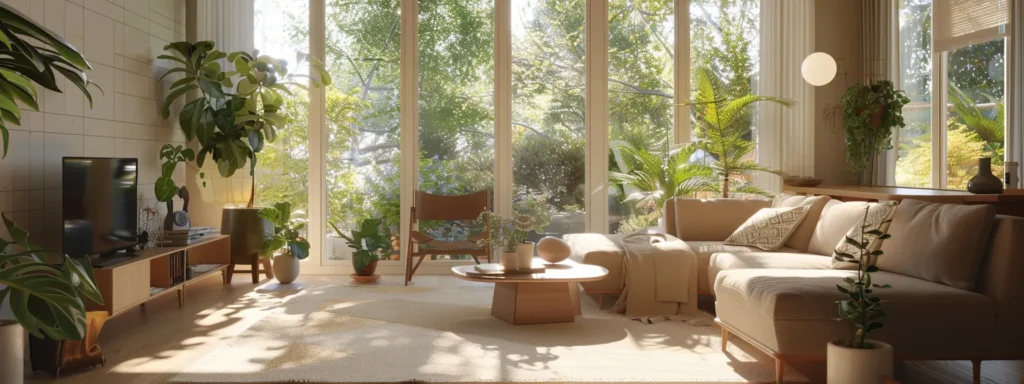
Transitioning to energy-efficient lighting solutions is essential for modern sustainable design. This section explores the benefits of LED lighting, maximizing natural light in interior spaces, and the installation of smart lighting systems for improved efficiency. Additionally, reducing energy consumption with automated controls contributes to better indoor air quality and less waste sent to landfill, supporting fair trade practices and aligning with principles of building information modeling.
Transitioning to LED Lighting Solutions
Transitioning to LED lighting solutions represents a significant step towards environmental protection in modern home design. LEDs consume less energy compared to traditional lighting options, reducing electricity usage and minimizing air pollution linked to power generation. By choosing LED fixtures that incorporate organic cotton shades or metal elements, homeowners can create stylish yet sustainable lighting that aligns with eco-friendly principles, further enhancing the overall aesthetic of their living spaces.
Maximizing Natural Light in Interior Spaces
Maximizing natural light in interior spaces is an effective strategy for reducing the overall carbon footprint of a home. By incorporating larger windows, skylights, or light tubes into the construction phase, homeowners can significantly enhance the flow of daylight, which in turn decreases reliance on artificial lighting. This approach not only mitigates the impacts of climate change but also creates a warm and inviting atmosphere, allowing natural materials like wool to take center stage in the décor, further promoting a sustainable lifestyle.
Installing Smart Lighting Systems for Efficiency
Installing smart lighting systems in home design not only enhances efficiency but also supports a sustainable lifestyle. These systems enable homeowners to control lighting based on their needs, reducing excess energy consumption and minimizing their ecological footprint. By incorporating renewable energy sources, such as solar-powered options, into renovations, individuals can further contribute to a natural environment that prioritizes sustainable products, ultimately promoting a healthier planet.
Reducing Energy Consumption With Automated Controls
Reducing energy consumption with automated controls is a significant step within sustainable architecture, addressing pressing environmental issues. By integrating smart lighting systems, homeowners can optimize energy use while minimizing reliance on traditional power sources, which often produce harmful plastic waste. This approach is particularly beneficial in biophilic design, as it enhances natural lighting through automation, aligning with the principles of environmentalism and promoting a healthier indoor environment.
Repurposing Furniture for Eco-Friendly Interior Spaces
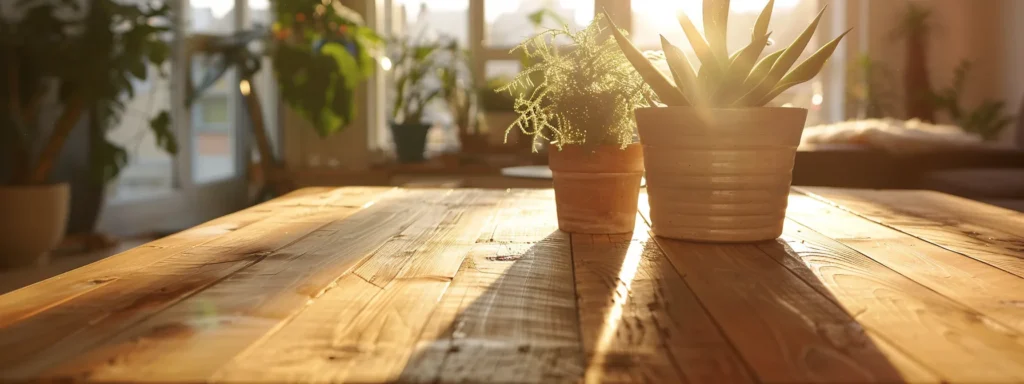
Repurposing furniture plays a vital role in sustainable interior design trends, addressing issues like toxicity and waste while enhancing architecture through creativity. The upcoming sections will explore effective upcycling techniques for existing furniture, the value of incorporating vintage and second-hand pieces, engaging DIY projects for sustainable décor, and the benefits of supporting local craftsmen and sustainable brands, all contributing to a more environmentally friendly lifestyle.
Upcycling Techniques for Existing Furniture
Upcycling existing furniture is a practical approach that enhances longevity and reduces reliance on new raw materials, thereby cutting down carbon dioxide emissions. Architects and designers can creatively transform older pieces into functional art by reimagining their use or giving them a fresh finish. Such practices not only foster sustainable living but also support the principles of green building, creating unique spaces that reflect personal style while contributing to environmental responsibility.
Incorporating Vintage and Second-Hand Pieces
Incorporating vintage and second-hand pieces into interior design not only champions ecology but also encourages innovation in the way spaces are crafted. By selecting furniture items that have been repurposed from previous manufacturing production, designers can add unique character to homes while minimizing the environmental impact associated with new manufacturing processes. This approach allows homeowners to curate distinctive interiors that tell a story, all while promoting sustainable practices that resonate with modern values of environmental responsibility.
Creative DIY Projects for Sustainable Décor
Creative DIY projects for sustainable décor allow individuals to reduce greenhouse gas emissions while enhancing their home decoration. By repurposing old furniture, such as transforming a wooden pallet into a stylish coffee table or turning vintage suitcases into unique storage solutions, homeowners can create personalized spaces that reflect their style. Engaging in these hands-on projects not only fosters environmental responsibility but also adds distinct character to the home, showcasing the value of creativity in sustainable living.
Supporting Local Craftsmen and Sustainable Brands
Supporting local craftsmen and sustainable brands is a crucial aspect of eco-friendly interior design that not only boosts the local economy but also promotes responsible sourcing. By investing in furniture and decor from artisans who prioritize eco-friendly practices, consumers can ensure that their choices contribute to a circular economy. This commitment helps reduce the carbon footprint associated with transporting goods over long distances while fostering a sense of community and personal connection to the pieces that enhance their living spaces.
Incorporating Indoor Plants to Boost Air Quality

Incorporating indoor plants plays a vital role in enhancing air quality within eco-friendly interior design. Selecting air-purifying plants benefits home environments, while designing green walls and vertical gardens maximizes limited space. Maintaining healthy indoor plant environments ensures longevity, and integrating greenery into interior aesthetics enhances overall design. Each of these aspects contributes to a sustainable modern living experience.
Selecting Air-Purifying Plants for the Home
Selecting air-purifying plants for the home serves as an effective strategy to improve indoor air quality while enhancing eco-friendly interior design. Popular choices, such as snake plants and peace lilies, are known for their ability to filter common toxins, making them ideal for residential spaces. By incorporating these plants into interior design, homeowners can create a healthier living environment that aligns with sustainable living goals and offers both aesthetic appeal and functional benefits.
Designing Green Walls and Vertical Gardens
Designing green walls and vertical gardens represents a creative approach to enhancing indoor air quality while maximizing space in eco-friendly interior design. These structures not only improve aesthetics but also filter harmful pollutants, making them ideal for urban settings where natural landscapes may be limited. By selecting a variety of air-purifying plants for these vertical installations, homeowners can create a dynamic, living feature that supports better health and well-being within modern living spaces.
Maintaining Healthy Indoor Plant Environments
Maintaining healthy indoor plant environments requires basic understanding and consistent care, particularly in terms of light, water, and humidity. Homeowners should assess natural lighting conditions to ensure each plant receives adequate sunlight, while regular watering schedules help prevent issues like overwatering or underwatering. Additionally, creating a humid environment through misting or placing plants on trays with water can significantly enhance plant health, leading to improved air quality throughout the home.
Integrating Greenery Into Interior Aesthetics
Integrating greenery into interior aesthetics not only enhances the visual appeal of a space but also promotes a healthier living environment. By strategically placing plants in common areas, designers can create a calming atmosphere that fosters relaxation and well-being. The use of planters and shelves allows for artistic displays, while features like green walls or hanging plants can turn any room into a vibrant, inviting space that aligns with eco-friendly design principles.
Selecting Non-Toxic and Organic Textiles for Interiors
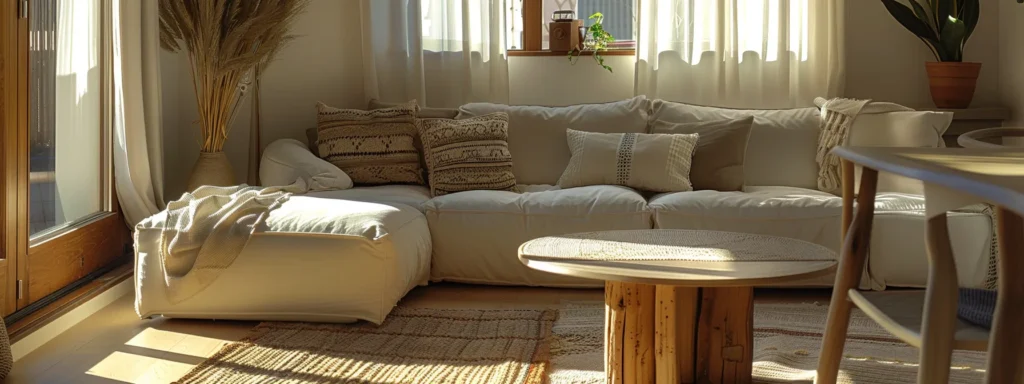
Selecting non-toxic and organic textiles is essential for creating a sustainable and healthy indoor environment. This section will discuss identifying sustainable fabrics for upholstery, focusing on the benefits of organic cotton, hemp, and linen. It will also highlight the importance of avoiding harmful chemicals in household textiles and provide guidance on choosing eco-friendly curtains, rugs, and bedding.
Identifying Sustainable Fabrics for Upholstery
Identifying sustainable fabrics for upholstery is essential for creating eco-friendly interiors that prioritize health and environmental responsibility. Materials such as organic cotton, hemp, and linen are excellent choices, as they are grown without harmful pesticides and processed using sustainable methods. When selecting textiles, consumers should look for certifications like Global Organic Textile Standard (GOTS) to ensure the quality and sustainability of the fabric, ultimately contributing to a healthier living environment.
Advantages of Organic Cotton, Hemp, and Linen
Organic cotton, hemp, and linen offer numerous benefits that contribute to eco-friendly interior design. These materials are cultivated without synthetic pesticides and fertilizers, making them safer for both the environment and the home. Choosing organic textiles not only reduces exposure to harmful chemicals but also fosters sustainable farming practices, supporting healthier ecosystems and promoting responsible sourcing for modern living spaces.
Avoiding Harmful Chemicals in Household Textiles
Avoiding harmful chemicals in household textiles is critical for maintaining a safe living environment and promoting sustainable interior design. Consumers can opt for textiles that are certified organic, ensuring they are free from toxic dyes and pesticides. Selecting products made from natural fibers and those that utilize eco-friendly manufacturing processes not only protects health but also contributes to a healthier planet, resonating with the growing emphasis on eco-conscious living.
Choosing Eco-Friendly Curtains, Rugs, and Bedding
Choosing eco-friendly curtains, rugs, and bedding is essential for creating a sustainable and healthy interior. Opting for materials made from organic fibers, such as organic cotton, linen, or wool, not only reduces exposure to harmful chemicals but also supports environmentally responsible manufacturing processes. By seeking out products with certifications such as the Global Organic Textile Standard (GOTS), homeowners can ensure their selections contribute positively to both indoor air quality and sustainable living practices.
Applying Smart Home Technology for Energy Conservation
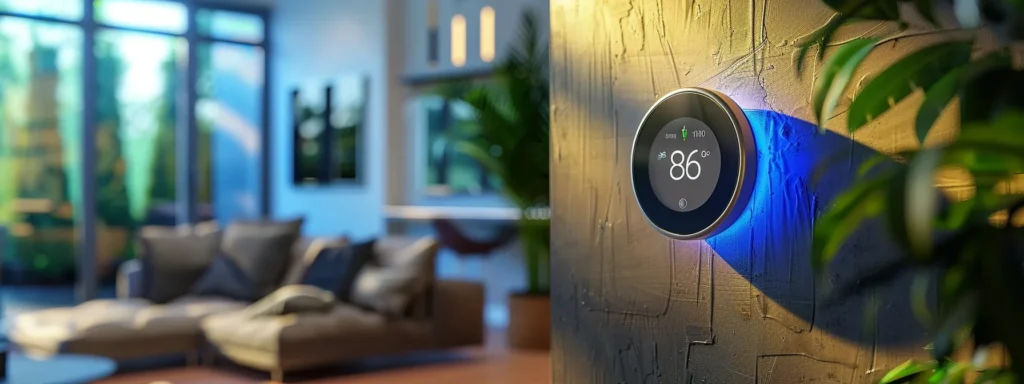
Utilizing smart home technology plays a vital role in energy conservation within eco-friendly design. This section will explore how smart thermostats and climate control systems optimize heating and cooling, enable monitoring of energy usage with intelligent devices, automate home systems for resource efficiency, and incorporate renewable energy solutions at home, all contributing to sustainable living practices.
Utilizing Smart Thermostats and Climate Control Systems
Utilizing smart thermostats and climate control systems significantly enhances energy conservation in eco-friendly interior design. These devices allow homeowners to optimize heating and cooling based on real-time data, leading to reduced energy usage and increased comfort. By programming these systems to adjust temperatures according to personal preferences and occupancy patterns, individuals can effectively lower their carbon footprint while enjoying a more efficient home environment.
Monitoring Energy Usage With Intelligent Devices
Monitoring energy usage with intelligent devices is a key component of sustainable modern living. These devices provide real-time insights into energy consumption, allowing homeowners to identify excessive usage and make informed decisions to reduce waste. For example, smart meters and energy monitoring systems can be integrated into home automation setups, enabling users to optimize their energy consumption patterns while contributing to a more eco-friendly lifestyle.
Automating Home Systems for Resource Efficiency
Automating home systems for resource efficiency is a key component of modern sustainable living. With automated controls, homeowners can optimize lighting, heating, and cooling based on occupancy patterns, ensuring energy is used only when necessary. This not only reduces energy waste but also enhances comfort, creating a seamless balance between functionality and sustainability in interior design.
Incorporating Renewable Energy Solutions at Home
Incorporating renewable energy solutions at home involves integrating technologies such as solar panels and wind turbines to create sustainable energy systems. These systems not only reduce reliance on fossil fuels but also significantly lower monthly utility bills, addressing common pain points for homeowners concerned about energy costs. By harnessing natural resources, individuals can enhance their eco-friendly interiors while contributing to a greener environment, making a proactive choice for sustainable modern living.
Conclusion
Eco-friendly interior design trends play a crucial role in promoting sustainability and enhancing modern living. By utilizing natural materials, energy-efficient lighting, and smart home technology, individuals can significantly reduce their environmental impact while creating stylish, healthy spaces. Prioritizing sustainable practices, such as incorporating recycled elements and supporting local craftsmen, fosters responsible consumption and contributes to a circular economy. Embracing these trends empowers homeowners to make informed choices that benefit both their well-being and the planet’s health.

